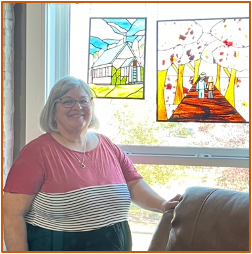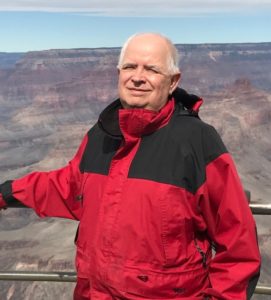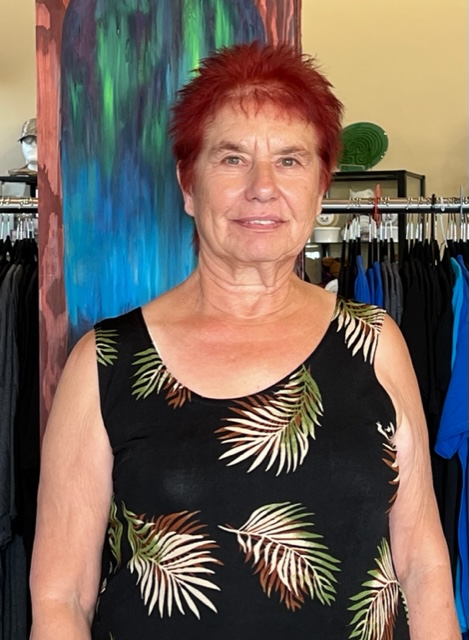Charlene Ungstad
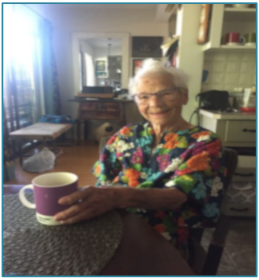
Iva Foster
Iva Foster
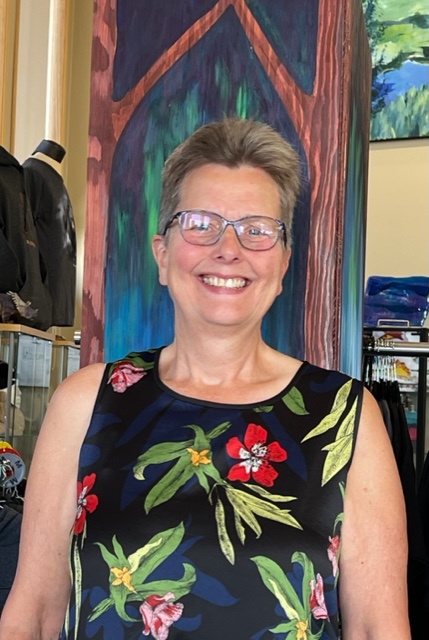
Karen Goad
DirectorKaren Goad
I am an associate member of NWARTA. I do have a connection to the teaching world through my husband, Martin Hanam. I retired in December, 2019 after a 40 year career as an adult educator/district home economist/farm direct marketing specialist with Alberta Agriculture. I wasn’t sure what retirement would bring but quickly learned to enjoy the time I can spend gardening, walking and biking the many terrific trails of the Grande Prairie region and enjoying new experiences as a director with NWARTA. It’s been wonderful making new friends from the traditional education sector and having the time to visit "aggie" friends and family across Alberta and Canada. Our two westie dogs as well as, Martin and I, all appreciate the new reality of two daily walks in the daylight, a really positive change from months of dark, winter walks during our working years.
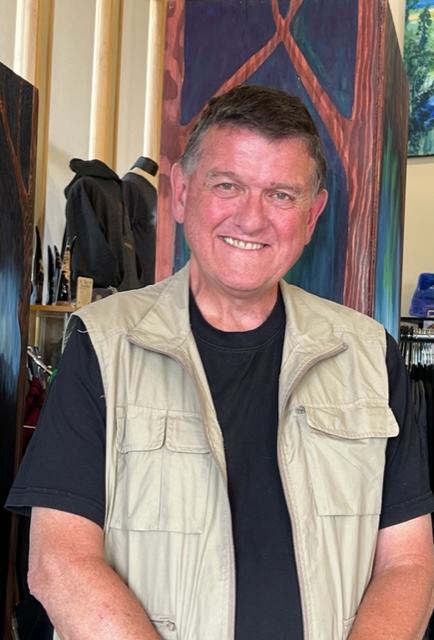
Martin Hanam
DirectorMartin Hanam
I have been a member of NWARTA since my retirement in 2019. This is my first year as a member of the executive. It is also my first year of 100% retirement as I am no longer subbing. Having my morning coffee with my book is an awesome way to start the day. I have been in education for about 30 years which followed an 18 year career as an Interior designer. My only regret is not starting teaching sooner. I appreciate the opportunities NWARTA provides to meet old friends and colleagues as well as creating new friends.
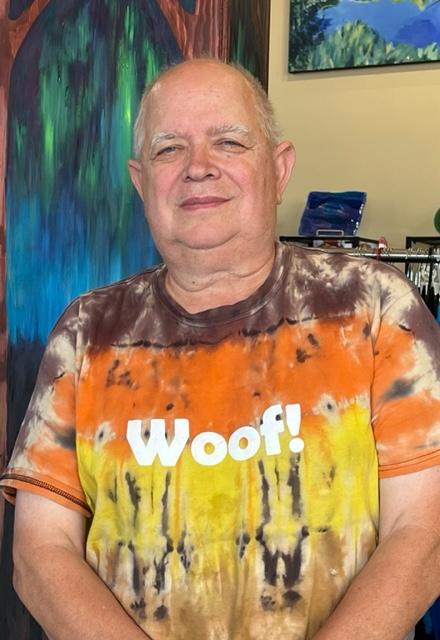
Perry Schofield
Vice PresidentPerry Schofield
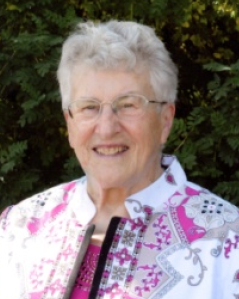
Cecilia (McIntosh) Dixson
Cecilia (McIntosh) Dixson
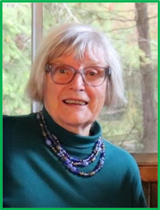
Martha Dawson
Martha Dawson
NWARTA Members Recognized for Volunteering in the Community
NWARTA Members Recognized for Volunteering in the Community
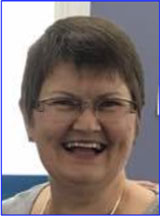
Susan K. Thomson
Susan K. Thomson
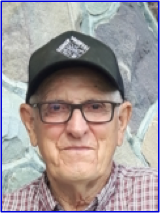
Bob (Robert) Neufeld
Bob (Robert) Neufeld
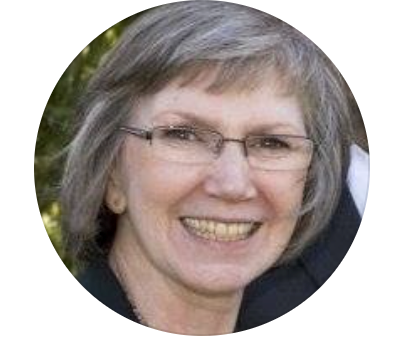
Jeanette Borstad
Jeanette Borstad
Served as Secretary 2021 - 2022
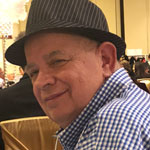
Perry Schofield
Perry Schofield
The Schofield Quail
Growing up on a dairy farm in Nova Scotia for the first 20 years of my life, I spent a lot of time with the farm animals. Not being mechanically inclined like my brother, I loved the livestock side. My favourites were the farm chickens who provided our eggs.
My first hobby, when I was ten years old, was showing purebred heritage poultry at the local country fairs. During the summer there was a fair every week for 10 weeks culminating in the provincial show. Along with these, there were several poultry club events. Wednesday night was wash-the-chickens night. There were three tubs of water: one soapy water, one rinse water, and a third tub with blueing in it (to make the white birds look even whiter). Friday and Saturdays were the show days. The first prize was $4, the second prize was $3, the third prize was $2, the fourth to seventh prizes were $1, with Best of Breed being $5. I often made $50 a weekend in prize money. This was much more than the 50 cents an hour I made working 40 hours a week weeding at the local orchard farm.
My love for birds and small animals continued after I left the farm to teach at my first job in Sept Isles, Quebec. During my three years there, I raised hamsters, guinea pigs and gerbils. When I moved to Alberta to teach, I was once again able to keep birds. During my years in Alberta, I have kept and raised over 28 types of pheasants, 8 types of partridges, 12 types of quail, in addition to black swans, several varieties of turkeys and peacocks, and about 30 varieties of Heritage Poultry. Also, during this time, I had my fling at raising chinchillas and several varieties of rabbits and guinea pigs. I also developed several new colour poultry lines, a time-consuming undertaking as it takes anywhere from 5 to 10 years to get a new colour to breed true to type.
My 15 minutes of fame came about by accident. In 1986, I ordered several colours of Coturnix quail eggs from the University of British Columbia Quail Facility as a classroom project. In this group were eggs for a colour called Silver, a grey coloured bird, and the gene for blue eggs called Celedon. I have kept these two lines continuously since that day. About 8 years ago, I was approached by a major breeder from Louisiana. He had been searching for this silver colour for years and the only place he could find it was a university in Paris, a university in Japan, and me. I was the only breeder in North America. After much hard work, we arranged a legal exchange of breeding eggs. Part of the arrangement was that he had to give me credit for developing it. After a year, he began selling the eggs as a special collection on eBay under the name the “Schofield Silver Collection”. My line has now spread worldwide and can be found in mainly European, Scandinavian, and South American countries. During that time, it was shortened by many and is now called the SSC line. In that export was also the gene for the blue egg, called Celadon. Facebook sites dealing with hobbyists raising birds laying Celadon eggs can be found in England, Germany, Sweden, and South America. All of this happened from my little hobby in DeBolt, Alberta.
Today I am retired and living in Grande Prairie, AB. I continue to work as a substitute teacher at several local high schools. After a year away from my bird hobby, following knee surgery, I have been able to get back into it. I have been lucky enough to make new friends and partner with them in raising quail and heritage poultry. The birds are kept at their acreage in Wembley, Alberta.
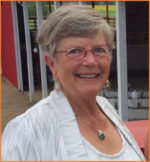
Carol Davidson
Carol Davidson
Do You Have a Post-Retirement Career?
Here’s Carol Davidson’s Experience with Hybrid Retirement
Many retirees leave their primary career and move to a hybrid retirement where they blend their leisure activities with work. This work often includes interests and passions they may not have had time for when they worked full time.
Such is the case with Carol Davidson who retired from Spirit River Regional Academy (Peace Wapiti School Division) in 2011. Since that time, she has developed a hybrid career blending her talents and interests with post-retirement learning and work.
As a teacher, Carol was also an avid learner and it has continued in retirement. She began by taking online training to be a Lifestyle Celebrant, “promoting the use of ceremony to mark milestones and transitions” that include marriages, memorials, family and healing. After completion she became a licenced Alberta Marriage Commissioner. Recently she reached the milestone of assisting 200 couples celebrate their nuptials . While many of her couples opt for the “standard” marriage ceremony, others want to celebrate with a unique ceremony. This is what Carol enjoys the most, meeting with couples to create a personalized ceremony. She takes great joy in the creative process of writing these messages. For example, one included blending the waters from the bride and the groom’s hometowns; there’s been the “loving cup” and even one with different types of coffee. She talks of one ceremony where the couple placed rocks in a circle representing the values on which they are building their marriage. Others focus on the blending and unity of families in a marriage; one such wedding had members contributing their favorite flower to create a family bouquet, a symbol of their joining together.
While Carol has worked with families to prepare memorials for their loved ones, marriages remain her favorite because they are a time of happiness and celebration. She also speaks of the couple who weren“brave enough to take the leap” after they had been together a mere 60 years at the ages of 80 and 87 (also her oldest couple to marry).
Carol loves the water and swimming. She has included this into another aspect of her retirement work. This too brings her a great sense of satisfaction. She took Water Art training and enjoyed working, pre-COVID, with the ladies and gentlemen at the Eastlink Pool instructing seniors’ deep water aquacise. Also before COVID-19, Carol received recognition for five years of service and eagerly awaits the time the pool will re-open for classes. Equally, she looks forward to getting back in the water for her own personal wellbeing. Despite the pool’s closure, she continues to update her certification for water art and first aid, a true lifelong learner.
Yet another joy for Carol is music, both singing and playing the piano. She sings with a community group called The Mudlarks (an Australian bird “known to sing in duet; each partner producing one note per second” to create a song that makes it seem only one bird is singing). While their performances have been limited during COVID, they enjoy songs with a positive message and great harmony. They join voices to entertain in Care Centres, at community events, and at church services and fundraisers. It is a joyful endeavour for these performers that is loved by their audiences.
For Carol, and many NWARTA members, remaining active and vibrant after retiring from a primary career means taking time to pursue a “different” path -- including a blend of interests, passions and continued service to others. The greatest advantage is a flexible schedule with time to pursue individual interests.
You may want to see pictures on Facebook of the many weddings Carol has officiated -- Carol’s Creative Memories Carol's Creative Ceremonies. Also, more pictures follow.
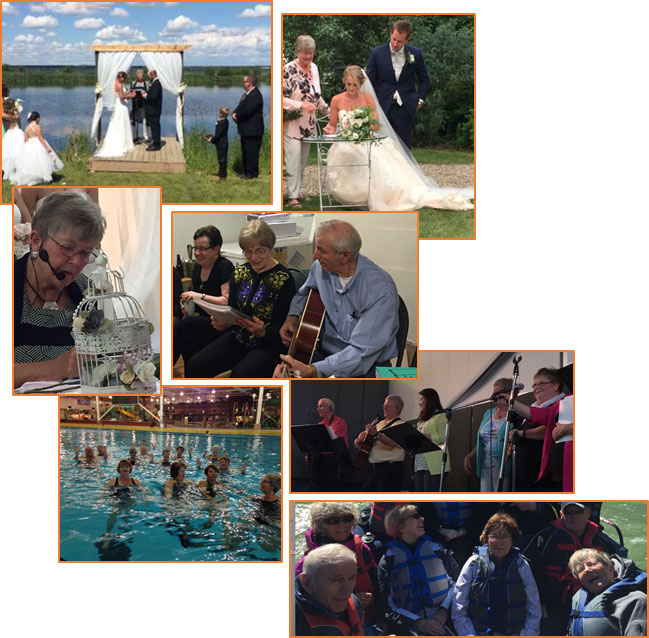
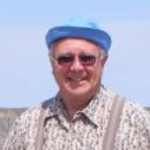
Cliff Mitchell
Cliff Mitchell
Served as Director 2021 - 2022
During COVID, Cliff has remained “active and engaged” pursuing his passion. He is a performer at heart and has worked with community and NWARTA members in founding the Seniors Reading Theatre Grande Prairie.
Initially, the project was seniors entertaining seniors but like any endeavour, it has grown to include seniors entertaining in the community. Several members performed in the Heritage Village Folktales Tour at the Grande Prairie Museum in mid-October 2020. Themed “Experience the chills of the past”, tales based in truth, with perhaps elements of fiction, were told in the spooky darkness of the Museum Village.
The cold was a discomfort for those who did not dress for the event, but that was not the case for Cliff who dawned a full-length buffalo coat. If I remember correctly, he said it weighed 40 pounds. While the picture is not the greatest (even with the flash), Cliff is pictured here reading in the Hudson’s Bay Trading Store (of course wearing a mask). On this evening, his performing/reading partner was his daughter Sandra.
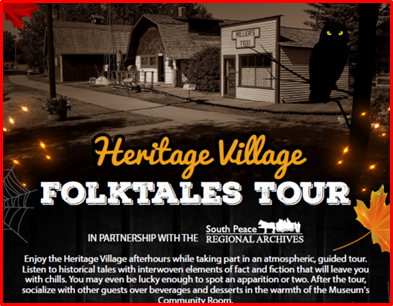
Another project for Seniors Reading Theatre is retelling the stories recorded in Grande Prairie archivist, Mary Nutting’s, A Grande Education: 100 Schools in the County of Grande
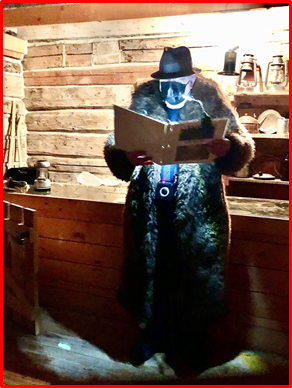
Prairie,1910-1960. The Readers are recognizing and honouring Mrs Nutting’s “contributions to preserving local history” by re-telling the stories of some of these 100 schools. They have videotaped these presentations and they are being edited for public viewing.
Bethe Goldie, both a Reader and a NWARTA member, says they could use more help in this project and welcomes interested individuals who may be willing to help to visit the Seniors Reading Theatre Facebook page.
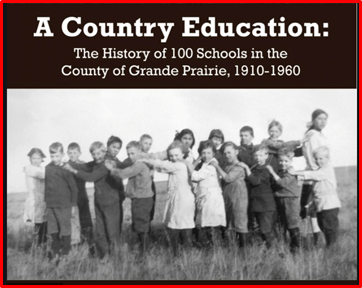
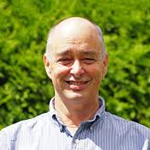
Gerald Logan
Gerald Logan
Mr Gerald Logan was born in High Prairie, Alberta and was raided in Crooked Creek, Alberta. He has 4 sisters and 2 brothers.
Gerald not only attended Ridge Valley school while growing up he became a teacher, teaching in Ridge Valley. There he met Marion Logan, from Nova Scotia who was subbing.. They have now been married for 40 years and have 3 daughters and 4 grandchildren.
During his working career, he has worked in all three area school districts, Peace Wapiti, Grande Prairie Public and Grande Prairie and District Catholic Schools in various capacities from teacher and technology lead to being a school principal. Twice he has been an AB Education consultant.
Gerald’s post-retirement life is almost busier than his educational career. He is presently a Catholic deacon with the Archdiocese of Grouard-McLennan, works as an instructor at Nitehawk year-round adventure park, is a Vice President of the MPTC convention board and is Past President of the ATA Educational Council.
Gerald’s passions and loves are taking him in a number of directions. He is currently enjoying mountain and road bike riding and is doing a weekly an online virtual biking circuit with people from all over the world. He is getting ready for the upcoming winter season toa skiing and snowboarding instructor, helping his grandchildren with online learning and is pursuing his interest once again in stained glass artwork.
Once he is able to travel again, Gerald not only hopes to have frequent visits to their retirement home in Iona, Nova Scotia but also travel back to Europe, particularly to visit Scotland, Italy (Rome) and France. Gerald is known as a soft-spoken, kind-hearted and very generous man with his time and talents. It was a pleasure to learn about and share his story.
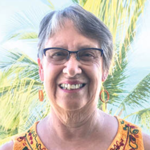
Jennifer Wrzosek
Jennifer Wrzosek
What have you been doing to keep busy during COVID 19?
NWARTA has some awesome members with incredible talents and giving
hearts.
Jennifer Wrzosek is one of these awesome members using her talents to bring joy not only to her own grandchildren but also to children beyond her family. Using the backdrop of their winter home in Mexico and a compilation of qualities from each grandchild, she has written and released as of October 2020, her first book, The Jumping Fish.

Jennifer, however, is not stopping with one book; she has more stories to tell. She is putting the finishing touches on the book for teens. Her fans and loyal critics, her grandchildren, do not hesitate to give it 5 stars.
You can find out more about talented retiree from her website https://www.jenniferwrzosek.com/ and if you contact her she will most certainly sign The Jumping Fish especially for you.
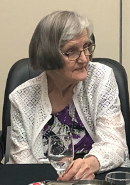
Margaret Penner
MemberMargaret Penner
The uncertainty surrounding Y2K was met with both wonder and dread, but it was also the start to Margaret Penner’s writing journey. Many people were wondering what the new millennium would bring. Friends even planted gardens to help feed the hungry, in case of loss of power and fuel. Chaos, blackouts, and perhaps even the world’s end went through the pessimist’s mind! Margaret and her husband Peter reassured their friends that only God alone knew the date of the world’s end and that of Christ’s return. On Y2K, Margaret received an unforgettable gift, a hard-covered book titled Grandmother’s Memories, which was full of questions that needed to have handwritten answers! It became the catalyst to her writing career.
Another life event that led Margaret to write was a life-threatening helicopter ride, where the medical pilot was forced to land in Timmons instead of Sudbury. Due to the delayed landing, there was major damage caused by the cerebral blockage. When Margaret came home, she had regained the ability to speak and was able to walk with a quad cane, but her dominant right hand remained helpless! That loss proved minimal in comparison to what could have been; she was ever so grateful to God that she could think clearly and express herself. She found that writing her story was very therapeutic and that she had a newfound purpose for living.
As a gift to not only her 16 grandchildren but also herself, she continued writing her story. As she finished chapters, she had them photocopied at Staples, decorated each page with stickers, and placed everyone’s pages in a duotang. She even completed the second duotang with 200 pages in total, 8 years later.
For Margaret and Peter’s 50th anniversary their family blessed them with a gift to redo their trip that had been thwarted by Margaret’s stroke. Peter was finally able to show her where he had entered ‘the porch of heaven’ — as he dubbed Canada — as a teenage refugee in 1948! Peter was a great animated storyteller; his turbulent young life in Ukraine and then in Hitler Youth in Germany, attributed to many requests to write his life story. He had no intentions to comply! The previous Christmas, the couple was gifted a small device to record Peter’s stories. One of their grandsons volunteered and spent five afternoons visiting and recording Grandpa’s stories. Another grandson’s wife was willing to type his story and Margaret gave them the questions that he hadn’t touched on. They came back for more answers but with his health becoming more challenging, his answer to them was to ask their Grandma, “for she knows all of my stories.” Margaret supplied Bethany Helen Thielmann with a third of the stories in the book she wrote about Peter’s single life, “Surely Goodness and Mercy Followed Me!”
Before Grandpa’s book was complete, Peter, with his signature twinkle in his eyes, made a profound statement that impacted her deeply: “Margie, I think that when you get to heaven someday, your greatest reward will be that you ever married me!” Another followed just six weeks before he finished his earthly journey when he blessed Margaret to write their story. Without Peter’s permission and his blessing, she couldn’t have written her book, The Twain Shall Be One, which begins with their engagement and ends with her being single again. After she completed the manuscript, she gave each one of their five children a copy before publishing it. One of their children commented on how frank the book was, to which Margaret replied: “Son, your Dad knew I’d be open and that is why he blessed me; I think he also knew that sharing his story about his struggle with PTSD might help someone!” All proceeds from Peter’s story went to refugees and immigration services as well as mental health and trauma recovery programs!
For Canada’s 150 Anniversary, Margaret was writing her parents’ life-story when she was encouraged to enter a fictional contest about how faith had played a vital role in Canada’s history! She felt that her parents’ story was stranger than fiction. Margaret thoroughly enjoyed the challenge but it didn’t cut the mustard. Her granddaughter arranged for a luncheon where she could read her story to approximately 100 family and friends in the McLaurin Church. Since then she has rewritten and read their story at The Gardens, where she now lives and most recently at the Westpoint Church on Valentine’s Day. Her three granddaughters accompanied her with appropriate songs while she cleared her voice and sipped water. Her grandson, Kaleb even captured the rendition and posted it on YouTube and PMBooks.ca.
If you would like to hear more about Margaret’s story, she wrote her third book which included her parents’ somewhat expanded story as well as her own childhood as she wrote it for her grandchildren. It was published in 2018 and is titled, History Hinges on A Buried Letter. Writing has enriched Margaret’s life and she truly believes that it is never too late to start!
The Buried Letter (54 minutes)
written and narrated by Margaret Penner
Music and vocals by Sarah, Lydia and Elizabeth Penner
Recorded February 14, 2018 at Westpoint Community Church in Grande Prairie, AB
Maxine Maxwell
Looking back at the past 16 years of Maxine’s retirement has made her a true believer in the saying “time flies when you’re having fun”. One project that Maxine had saved for retirement was to trace her Dad’s Ukrainian roots using a small collection of papers, names, dates, and relationships with relatives. With retirement finally there, she had no idea of where or how to get started as the information had never been compiled or organized.
Her first step was joining the Grande Prairie Alberta Genealogical Society. After taking a beginner genealogy course and rubbing shoulders with the cumulative experiences of the like-minded members, she had the experience she needed. Volunteers gave her one-on-one assistance in reading and interpreting old Latin and Slavic documents, where Maxine found clues about her family’s history.
Later she joined the East European Genealogy Society from Winnipeg. Brian Lenius, a founding member, had published a genealogical gazetteer, containing information on how documents and records were written and organized under the old country system and even old maps of ancestral villages. This invaluable publication kept her focused on the correct path and guided her in many areas throughout her search. Other volunteers from this organization translated old letters unlocking family information that relatives had collected.
Finally, a few years later, she felt that she had achieved a level in her research that allowed her to start thinking of booking a trip to retrace the steps of her Ukrainian ancestors. In September 2016, a trip to her ancestral villages in Poland and Ukraine was marked in the calendar. With a lot of expertise, pre-planning, and collaboration with Brian Lenius and Lisa Haji Abbasi, both from the East European Genealogical Society, they began their month-long adventure.
Their flight landed in Rzeszow, Poland where they met their Polish driver and interpreter. With a GPS and detailed cadastral map of Maxine’s paternal Grandfather’s village, that Brian had customized, they drove through southeast Poland to the exact location.
From both sides of the road, they could only see large tracts of reforested trees, but they had a feeling that they were in the right spot. They set out with a map in hand down a small trail into the forest and to their relief, they found evidence that the little village of Tomsy once existed there. Brian explained that historically when borders were adjusted after WWII, some small villages were destroyed as families were relocated. It was nevertheless a special moment for Maxine to walk on this old family ground.
Brian also helped them sort through old church and village records in the Archives of Przemysl, Poland and later in L’viv and Ternopil, Ukraine where they successfully located additional family history, that was unavailable online.
Once in Ukraine, they were immersed in the traditional culture. Maria, their new driver and interpreter, met them at the border of her century-old home and farm in the village of Didyliv, just outside of L’viv. There they experienced life much like their ancestors’, eating the food that was largely grown and prepared locally, and observing the hard manual labour of villagers gathering harvests from their strip farms nearby, providing self-sufficiency that was impressive to see.
Maria skillfully drove them on old highways full of water-filled holes, some half the size of her mid-sized car, towards Maxine’s paternal Grandmother’s village near Sokal. Noticeably to them was the abundance of oversized deciduous trees planted all along the fields and highways. A puzzling sight as they drove past, was people hitting the tree branches with long poles. To their surprise, these people were harvesting walnuts, a common fall activity, from the plentiful trees.
Thanks once again to Brian’s mapping expertise, they located a home and garden property in the village of Perwiatycze that they believed to be Maxine’s Grandmother’s birthplace. She will always remember this surreal and special moment as they took photos in the rain.
Now sitting back at home in her recliner, Maxine is amazed that her retirement hobby of researching family history could culminate into such a memorable experience of visiting the birthplace of her grandparents and the land of her ancestors!
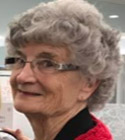
Lorna McIlroy
Lorna McIlroy
Served as Secretary, President, and Past President 2019 - 2022
Lorna is a lifelong gardener and a lifelong learner. After a rewarding quarter-century in the classroom; early retirement has allowed Lorna to complete her Prairie Horticulture Certificate program and continue her horticultural pursuits. As a trained horticultural judge, she has judged shows and instructed judging courses throughout western Canada. Now serving as Past-President of the Alberta Horticultural Association, she volunteers worldwide for Communities in Bloom as well as at the local Museum and Community Garden.
After several years as Secretary, Lorna has been President of NWARTA for five years and looks forward to becoming Past-President. She currently enjoys the challenges of being Chair of ARTA’s Strategic Planning & Advocacy Committee.
Lorna is passionate about travelling and is appreciative that her husband keeps the home-fires burning. As proud as Lorna is of her horticultural achievements, the ‘crop’ that she is proudest of would be her two daughters and two granddaughters.
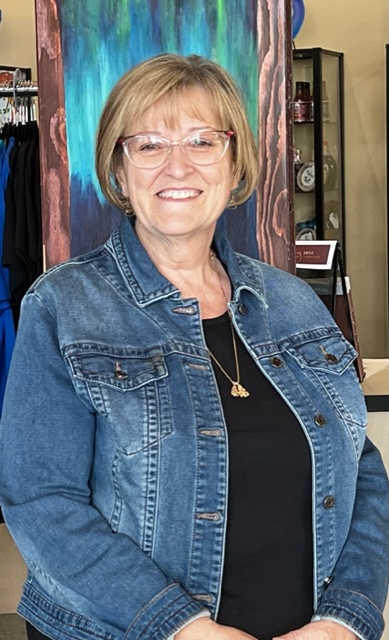
Joan Godbout
Past PresidentJoan Godbout
For Joan, the passage into retirement did not require a great adjustment compared to what she had been led to believe. While being an educator had been her career of choice, she has a great number of other interests and activities that easily fill her days. Eastlink classes and group/volunteer activities quickly became part of the routine as did home renovations and re-landscaping. Probably the most exciting part of this passage has been the opportunity for Joan to tackle some items off of her travel bucket list.
Australia had not been on the list, but when the opportunity presented itself, she just couldn’t say no. So retirement started with a bang — an incredible trip from Grande Prairie’s summer to Melbourne’s winter (thankfully no snow and only rain) and eventually to the warmer weather of the Gold Coast and the Great Barrier Reef where she sunned on the beach. To Joan, the varied animal life and landscapes were the most enjoyable and exciting part!
Dawn Chapman
MemberDawn Chapman
The summer of 1996 was one of Dawn Chapman’s most memorable travel times, as her husband worked overseas and she was able to join him in the summer months, most of the time paid for by his company.
In July 1996, she left Grande Prairie and travelled to London, England where she then travelled via train to Lymington, Hampshire. Her mom was a war bride so all of her family was in southeast England. She loved to visit the small town where her mother was born and raised until she left for Canada in 1946 with her Canadian soldier. Dawn described it as a Georgian village, quaint with cobbled streets, giant oaks, and centuries-old pubs. Her cousin lived in a house called “The Old Vicarage” and she was delighted by the tales that were written about their home and the underground passageways used in the sixteenth and seventeenth centuries. The Angel Hotel, an old coaching station from the fifteenth century, was often visited by Dawn and her husband. It is reputed to have a lady in a flowing white gown who wanders the hallways upstairs at night. Although tempted, Dawn admits that she never had the courage to peak down the hallways at night in search of her.
After a few weeks in England, she flew to Oman where her husband was working. Since she had lived in Teheran, Iran, in the early 1970’s she was expecting a cluttered, noisy, and dirty city. To her surprise, Muscat, situated on the Gulf of Oman, was quite the opposite. It was brilliantly clean and modern! Sultan Qaboos, knowing the oil income would not last forever, was trying to create alternative income for his people and was investing in infrastructures like hospitals, schools, and universities. During her three weeks in Oman, she stayed in an oil camp, travelled into the Empty Quarter of Saudi Arabia by Jeep, and met hundreds of camels wandering (seemingly aimless) everywhere she went. At the oil camp, she even saw camel spiders as big as her hand scurrying across the desert. The sand dunes in Saudi Arabia were 600 feet high and brilliantly orange. It was 46 degrees Celsius the day they drove into Saudi across a completely unprotected border. There was no life for miles and miles. One of the men in the oil camp brought fresh dates every day and if you did not know what you were eating you would think it was butterscotch pudding. Dawn felt very fortunate to have been completely immersed in the culture and could hardly wait to tell her students about it in the fall!
They then flew from Muscat to Salalah, a city very near the Yemen border. In Salalah, they feasted on fresh papaya, bananas, mangoes, and pineapple as they drove miles and miles along the pristine, white beaches on the Arabian Sea. The only life to be seen was a few camels standing in the ocean. They found it so refreshing to be in a land with so little people and so much wildlife. To this day Dawn says she can still hear the roar of the water pounding onto the sand and can envision those camels cooling themselves in the surf! The last place they visited in Salalah was the Tomb of Job the Prophet.
Next, they flew back to Muscat to board their Air India flight to Delhi. They spent ten days in India on a first-class tour where they stayed at five-star hotels, had a private car, and to their luck an English-speaking driver. Even so, they managed to pick up a nasty stomach bug that kept them bound to their hotel for the last day. Nevertheless, they managed to see Delhi in good form, visiting the Red Fort, Gandhi’s Tomb, and carpet factories. Then they did the Triangle Tour: Delhi, Agra, and Jaipur. Along the way, they encountered dancing bears, working elephants, and hundreds of monkeys. Funny enough, Dawn pointed out how the monkeys would try to get in your handbag or pull it right off your shoulder if you were not wary. Later, she and her husband visited the Taj Mahal and got very stern instructions from their tour guide to not speak to anyone but him during the tour as other locals have been known to try to steal tourists from other guides. Apparently, it is quite a local political situation! At any rate, you would have to be Princess Diana to get a good look at Mumtaz’ Tomb because there are thousands of people there all of the time. On the way back to Delhi, the roads, many only trail-width wide were completely harrowing with at least three lanes of traffic in a single designated lane. Their driver would nonchalantly pull out to pass a big truck loaded with workers when another was oncoming. Dawn was a wreck by the time they got to their hotel in Delhi. That is when all of the curry dishes she had eaten the previous week decided to get even with her.
Next, they were off to the airport and onto Royal Thai Airlines for a trip to Beijing, China, with a quick layover in Bangkok. They arrived in Beijing the next afternoon and transferred directly to their hotel for some much-needed rest. The next day they got instructions from the concierge on where to find a pharmacy. What a cultural experience that was! The chemists were pulling down jars and liquids of this and that, working with mortar and pestle and creating all sorts of remedies for their clientele. With charades, she explained how her entire stash of Imodium was depleted and that she still had symptoms keeping her in the hotel. The Pharmacist then had a eureka moment and began stirring up a solution — let’s just say it worked. During the rest of their time in China, they rode a rickshaw around Tiananmen Square and saw The Great Hall of the People. They then met a wonderful Chinese man who offered to be their guide for a few days. With his knowledge and know-how, they visited the Forbidden City, Ming Tombs, a beautiful lake where a boat made of cement was moored, lovely parks, and of course, the Great Wall. One of Dawn’s favourite memories was learning to use chopsticks (interchangeably with a fork) and enjoying the most delicious Chinese food they had ever eaten including Peking Duck. At this time, in 1996, it was still difficult to travel outside of the cities without some sort of government guide. Dawn’s husband had been to China about three years earlier to study drilling equipment and he had to have a soldier with him at all times. By the way, the Chinese drilling rigs he bought are actually still being used in Egypt and Sudan today!
Their trip had come to an end and it was time to catch their Canadian Pacific 747 back home. After a short stop in Vancouver, they journeyed on with Canadian Pacific to Grande Prairie to complete their seven-week trip around the world in 1996! Dawn feels so lucky to have had this experience and to have shared her stories with her students in the fall.
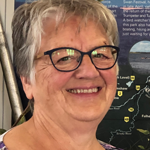
Yvonne Mury
Yvonne Mury
Served as Director 2017-2022
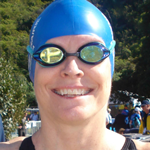
Mary-Helen Hopkins
MemberMary-Helen Hopkins
Mary-Helen Hopkins, a NWARTA branch member, has amassed a huge number of medals for swimming. In 2015 at the Alberta Masters Provincial Championships held in Grande Prairie, she was awarded thirteen gold medals, winning nine for individual races and four in relay races.
In April of this year, Hopkins won five gold medals at the Alberta Masters Provincial Championships and left shortly afterwards for the World Masters Games in Auckland, New Zealand, for her third World Masters Games. The 2005 games in Edmonton were particularly rewarding for Hopkins as she competed there with her father from the USA.
Hopkins swam in the 2016 Barbados Open Water Festival and finished second in the 65-69 Ladies category. Her only other open water experience had been at Sylvan Lake. Most recently, Hopkins won four gold medals at the Alberta 55 Plus Provincial Games held in Calgary in August of this past year.
The freestyle and backstroke are now her strongest events for the 50-metre, 100-metre, and 200-metre distances. A rotator cuff injury caused her to drop the butterfly, and a knee injury has slowed her down on the breaststroke.
Hopkins began her swimming career competing in the six and under age group in California and now competes locally, nationally, and internationally in the 65-69 age group. However, she stresses that several Masters swimmers didn’t learn how to swim until they were seniors and they have been successful despite their late starts. There is no upper age limit in being allowed to compete. Her personal hero, Jane Asher of England is 86 years old, holds twenty-three world records, and shows zero signs of slowing down, even though she has undergone bilateral hip replacements.
Hopkins finds that swimming is an excellent way to maintain her physical health. The water is her friend, holding her up and relieving pressure on her sore body parts (of which she admits there are more these days). Swimming also contributes to her social and emotional health. It is an important part of her identity in retirement, good use of her time, and a great way to meet inspiring people. She makes many good friends at the various games where she manages to incorporate additional touring and holidaying. Hopkins swims regularly in Grande Prairie with the Eastlink Centre’s Masters Swim Club, affectionately known as the Fast Swimming Fossils.
